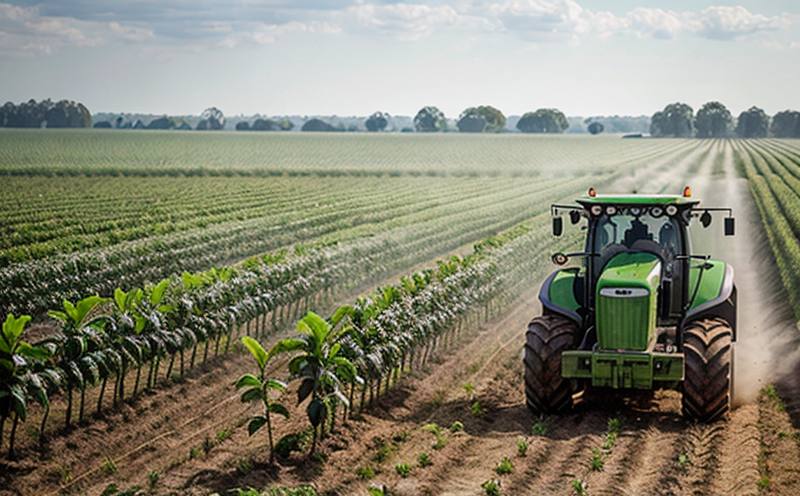ISO 15985 Biodegradation Testing of Agricultural Chemicals
The ISO 15985 biodegradation test is a critical method used in the agricultural sector to determine whether an applied chemical will break down naturally within the environment. This test ensures that chemicals do not persist longer than necessary, thereby minimizing potential harm to ecosystems and human health.
The process involves exposing the chemical substance to natural environmental conditions over a specified period. During this time, microorganisms in soil or water degrade the substance into simpler compounds such as carbon dioxide (CO2), water, and biomass. The test measures both the rate of decomposition and the extent of biodegradation.
For agricultural chemicals like pesticides, herbicides, and fertilizers, the outcome of this testing can influence regulatory compliance, product formulation, and environmental impact assessments. Compliance with ISO 15985 helps manufacturers ensure that their products meet international standards for safe use in agriculture.
The test is particularly important as it addresses concerns about the persistence of agricultural chemicals in soil, water bodies, and air. By ensuring rapid breakdown rates, it supports sustainable farming practices and protects biodiversity.
Key parameters include temperature, pH levels, moisture content, and microbial activity which can vary based on geographical location or specific environmental conditions. Specimens are carefully prepared to represent real-world applications of the chemical in question.
Instruments used for monitoring biodegradation processes often include incubators, spectrophotometers, and gas chromatographs depending on the nature of the test. The results from these analyses provide detailed insights into how effectively different components of agricultural chemicals are degraded under controlled conditions simulating real-world scenarios.
Acceptance criteria specify that at least 60% biodegradation should be achieved within a defined period (typically 28 days) for the chemical to pass this stringent test. Failure to meet these standards could lead to restrictions on usage or even banishment from markets altogether due to environmental risks.
Why Choose This Test
- Ensures regulatory compliance with international standards set forth by ISO 15985.
- Aids in formulating safer agricultural chemicals that do not pose long-term threats to the environment.
- Provides valuable data for environmental impact assessments and sustainable farming practices.
- Minimizes potential health hazards associated with persistent chemical residues in soil, water, or air.
Industry Applications
The ISO 15985 biodegradation test finds extensive application across various segments within the agricultural sector. It plays a crucial role in the development and quality assurance of pesticides, herbicides, fungicides, and fertilizers.
Quality managers rely on this testing to ensure that new formulations meet stringent environmental criteria before being released into markets. Compliance officers use these results when navigating complex regulatory landscapes to stay ahead of changing laws and regulations.
R&D engineers leverage biodegradation tests early in the product lifecycle to identify potential issues early, allowing for iterative improvements without extensive field testing later on. Procurement teams also benefit from knowing which suppliers adhere strictly to international standards ensuring consistency across supply chains.
Quality and Reliability Assurance
- Consistent results that reflect accurate representation of actual environmental conditions.
- Highly reliable data providing confidence in product performance under diverse climatic zones.
- Robust validation protocols ensuring the accuracy and precision of each test run.
The reliability of ISO 15985 lies in its ability to consistently reproduce results across multiple trials. This repeatability is crucial for maintaining trust among stakeholders and ensuring that any changes made during product development do not compromise environmental safety.
Additionally, the robustness of the testing procedure allows it to account for variations in climate conditions worldwide, making it adaptable to different geographic locations where agricultural chemicals might be used. This adaptability ensures consistent quality assurance regardless of location or season.





